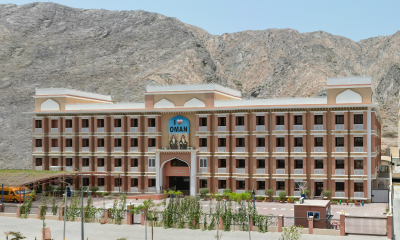Highlights
Abu Dhabi’s economic growth under pressure as public spending scaled back: Moody
Abu Dhabi’s (Aa2 stable) economic growth could come under pressure this year amid government spending cutbacks in response to lower oil prices, says Moody’s Investors Service in a report recently published.

Abu Dhabi’s (Aa2 stable) economic growth could come under pressure this year amid government spending cutbacks in response to lower oil prices, says Moody’s Investors Service in a report recently published.
Moody’s estimates that the emirate’s real GDP growth will slow to 3.1% in 2016 compared to 3.4% in 2015. The non-oil economy and expanding oil sector have so far allowed Abu Dhabi to avoid a recession, but lower government spending on infrastructure projects is likely to dampen non-oil growth.
Higher oil production and refining volumes will only partially offset the likely slowdown in non-oil sectors of the economy.
“A prolonged period of low oil prices could gradually erode the emirate’s fiscal buffers if it does not maintain its prudent budgeting. In 2016, the emirate’s deficit will likely widen to 14% of GDP,” says Steven A. Hess, a Moody’s Senior Vice President.
“However, even if global prices fall further the government will be able to finance fiscal deficits for 5 to 10 years by liquidating assets. Overall, the country’s considerable foreign assets should mitigate the negative consequences of oil price volatility on Abu Dhabi’s fiscal and external accounts.”
Abu Dhabi’s liquidity risks are limited, with a very low debt burden relative to other investment grade countries. Public sector debt falling due in 2016 accounts for 4.8% of GDP, with direct government obligations representing only 0.2% of GDP.
Moody’s assesses the country’s susceptibility to event risk as medium, given volatile regional geo-political tensions. The rating agency notes the periodic rise of these tension as a rating constraint.
Moody’s report, entitled “Government of Abu Dhabi — Aa2 Stable” is available on www.moodys.com. Moody’s subscribers can access this report via the link provided at the end of this press release. The rating agency’s report is an update to the markets and does not constitute a rating action.
-

 Banking & Finance2 weeks ago
Banking & Finance2 weeks agoOman Oil Marketing Company Concludes Its Annual Health, Safety, Environment, and Quality Week, Reaffirming People and Safety as a Top Priority
-

 Economy2 months ago
Economy2 months agoMaal Card: What Oman’s New National Payment Card Means for Everyday Users
-

 Events2 months ago
Events2 months agoOER Corporate Excellence Awards 2025 Honours Entities and Innovations in Oman
-

 News2 months ago
News2 months agoSheikh Suhail Bahwan, Chairman of Suhail Bahwan Group, Passes Away
-

 News1 month ago
News1 month agoOIG Appoints New CEO to Lead Its Next Chapter of Excellence
-

 Economy2 months ago
Economy2 months agoOman Unveils Official Omani Rial Symbol in Landmark Move to Boost Global Currency Presence
-

 News1 month ago
News1 month agoReport: How India & The Middle East Are Exploiting Immense Economic Synergies
-

 Uncategorized1 month ago
Uncategorized1 month agoOman’s ISWK Cambridge Learners Achieve ‘Top in the World’ and National Honours in June 2025 Cambridge Series



























You must be logged in to post a comment Login